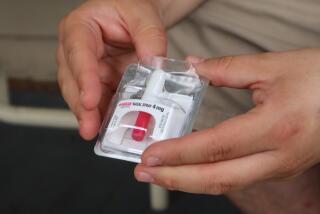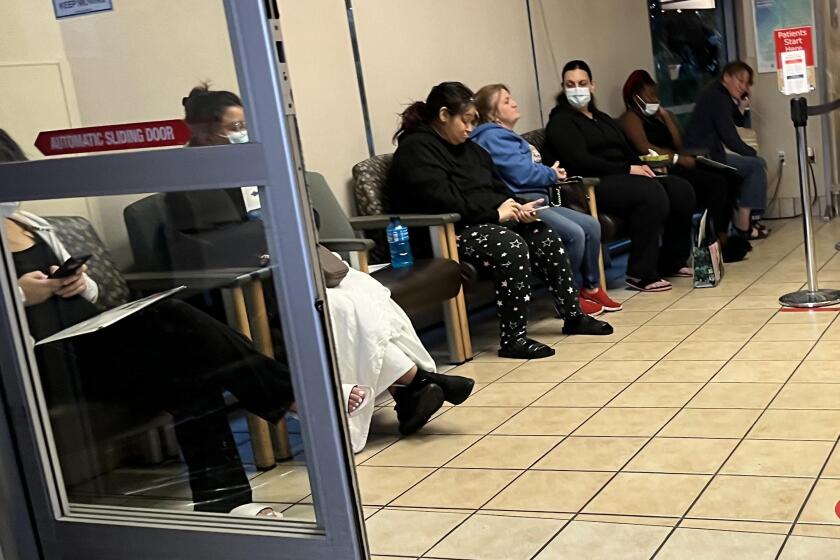Medical alerts in Sacramento
As their session draws to a close, California lawmakers are poised to approve at least two hotly disputed measures that could slow the growth of healthcare costs. One would allow nurses with advanced training to deliver more medical care, and another would open the door to less-expensive versions of pricey biologic drugs. Although the nursing bill was weakened in the face of opposition from doctors, it’s still an important step in the right direction. The biologic drug measure, on the other hand, strays off course.
The nursing measure is one of three by state Sen. Ed Hernandez (D-West Covina) to let medical professionals with advanced degrees provide more care without a doctor’s supervision, in keeping with the limits of their training. Considering the high cost of medical care in the United States and the short supply of primary-care doctors, this sort of flexibility makes sense as long as the appropriate safeguards are in place. But lawmakers balked at Hernandez’s proposal for optometrists (SB 492) and have watered down the measures aimed at pharmacists (SB 493) and nurse practitioners (SB 491).
In particular, Hernandez is no longer proposing to allow experienced nurse practitioners — registered nurses who have advanced degrees and clinical training — to work completely independently of physicians. Instead, his bill would allow them to work without a doctor’s direct supervision if they were part of a medical team, such as in a clinic or a group practice.
The California Medical Assn., a trade group for doctors, has withdrawn its objection to the pharmacist bill but is still fighting the one for nurses. According to the association, even the amended SB 491 would still allow nurse practitioners to set up practices without physicians and to dispense narcotics with no effective oversight.
Those are hyperbolic complaints. The law wouldn’t allow nurse practitioners to do anything they’re not already licensed to do. And its clear intent is to give nurses more flexibility when they’re integrated into a group of healthcare providers, with their work overseen by state regulators but not restricted by arbitrary doctor-to-nurse ratios or procedural rules. Such a move could help medical groups deliver care to more Californians and provide basic services at lower cost.
The drug bill (SB 598) by Sen. Jerry Hill (D-San Mateo) would lay the groundwork for the dispensation of biosimilar medications, which have yet to be introduced in the United States. Such complex biologic compounds — produced by living organisms, not chemical combinations — are designed to yield the same effects as brand-name biologic drugs, but they should cost significantly less to make.
Hill’s measure would allow pharmacists to substitute a less-expensive biosimilar for a branded drug without consulting the patient’s doctor if the Food and Drug Administration deemed the compounds interchangeable. That freedom to substitute is mandated by federal law. But until 2017, pharmacists would be required to notify the prescribing doctor within five days whether the brand-name biologic or the corresponding biosimilar was dispensed, something they don’t have to do for non-biologic drugs and their generic equivalents.
Supporters of the measure, including two big biotech companies and one generic drug maker, say the notification requirement would help doctors respond if a biosimilar caused an adverse reaction long after it was dispensed, as sometimes happens with biologic drugs. But the extra step could also cast a pall of suspicion over the new treatments, reducing the potential savings. And if the notification is so vital to safety, why require it for only a few years, and only in California?
The FDA has yet to approve any biosimilars, let alone declare that one has met the stringent requirements set by Congress for interchangeability. And drug safety is the FDA’s strength, not Sacramento’s. If tracking substitutions is key to the safe use of biosimilars, such a requirement should be handed down from Washington. State lawmakers should resist the urge to get out in front of the FDA in a way that could undermine the goal they’re purportedly trying to achieve.
More to Read
A cure for the common opinion
Get thought-provoking perspectives with our weekly newsletter.
You may occasionally receive promotional content from the Los Angeles Times.










